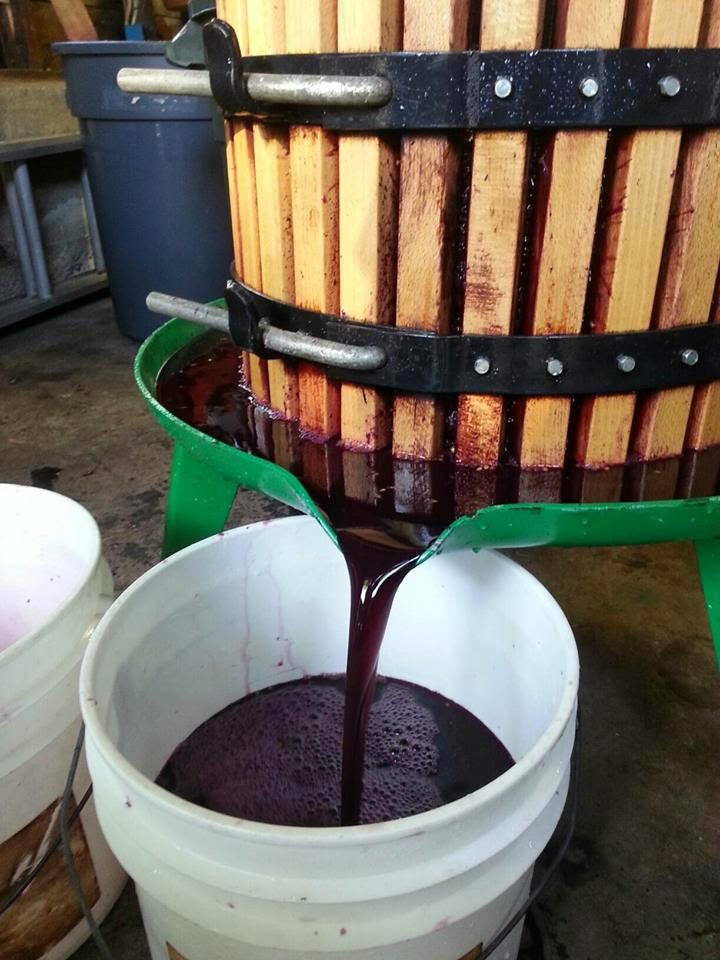 What to equip a home winery with? To begin with, choose a simple apparatus – do not buy complicated devices, until you really need them. Here is a list of basic equipment:
What to equip a home winery with? To begin with, choose a simple apparatus – do not buy complicated devices, until you really need them. Here is a list of basic equipment:
• two nine-liter buckets of rigid, white plastic, suitable for food storage; ceramic dishes are not suitable for this purpose (may contain lead), Enameled (if there will be a blemish on them, contact with metal can spoil the wine), copper or brass;
• plastic cover, preventing air access;
• a large piece of gauze;
• large funnel, preferably one, so that the strainer can fit;
• large wooden or plastic spoon;
• glass balloons or wine glasses (their number depends on individual needs);
• plastic dishes suitable for storing food (not after vinegar!) – you can use them for short-term wine storage;
• tight rubber or cork stoppers with a fermentation tube for ridge tiles or jars; I personally prefer rubber, because they are easier to sterilize;
• rubber or plastic tube for extracting wine;
• hydrometer and menzurka (details in the chapter 7);
• corks;
• supply of citric acid, tartaric acid and stoppers;
• bottles, preferably with a concave bottom;
• labels;
• bottle brush;
• thermometer.
Sterilization of apparatus
Surely you have noticed, that there are no sterilization devices on the list of necessary equipment. And yet this purity is probably the most important aspect of wine preparation, although also most often ignored. Dishes and instruments should be chemically clean, and not just look clean. Hot water and a brush are great detergents, but they do not necessarily have to remove all bacteria. To remove any debris, you need to use a disulfite solution (metabisulfite) punishment. This substance is available in specialized wine stores. In the UK you can also buy it in the form of tablets called "Camden tablets". Dissolve two tablets in 1/2 liter of water with a teaspoon of citric acid. Thoroughly rinse all equipment with the resulting solution. It can be used multiple times, provided it is kept in tightly closed vessels.
In Poland, it is more often used in the powdered form of sodium disulfite. At 4i 1/2 we take a liter of water 140 g of powder (or 14 g na 1/2 Litre). Important: do not inhale the vapors of dissolved sodium bisulfite!
Pour the prepared solution into the gander, bottles and tubing; clean them with a brush. Also soak the tubes and plugs for a few minutes. The most important thing, however, is to clean the bucket, in which we will keep the must. Certainly, its interior will scratch after some time, in plastic losses, bacteria accumulate. Leave the solution in a bucket for several minutes, then pour and rinse the dish with hot water. You have to be very careful, so as not to reintroduce microbes into the sterilized bucket. It is very difficult to keep them absolutely clean, but you can keep the amount of bacteria to a minimum, thoroughly washing the fruit (especially dried). When you put the main ingredients of the wine and the water in a bucket, add one Campden tablet and leave the solution overnight. After 24 hours, you can add yeast leaven, which will start alcoholic fermentation, and then the bacteria will be destroyed, before they can do any damage.
Don't listen to your friends, who claim, that they never use anything but hot water for washing – a moment of inattention is enough, and all the glass of wine may be poured out.